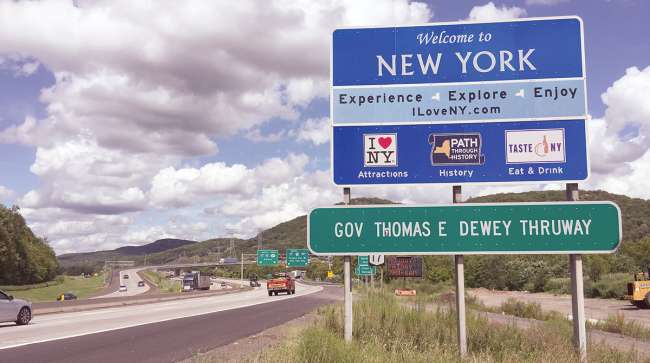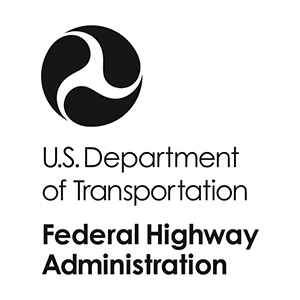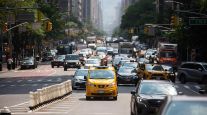Staff Reporter
New York DOT Removes Controversial Highway Signs

The New York State Department of Transportation completed ahead of schedule the removal of hundreds of the large blue tourism signs that line highways.
NYSDOT struck a deal with the Federal Highway Administration regarding the signs Sept. 28. The signs, printed with messages such as “I Love New York” and “Pathways Through History,” have been the subject of deliberation between the agencies for months. In February, FHWA sent a letter to New York transportation officials saying the agency would dock $14 million in funding from the state unless the signs were removed by Sept. 30.

The agreement between the agencies stipulates that NYSDOT will launch a new sign campaign and hold on to the $14 million. Under the compromise, most of the 514 signs will be relocated to other attractions, such as parks, historic sites and rest areas. Signs that designate regions, known as motherboards, will remain in place.
“Pursuant to our agreement with FHWA, DOT and the Thruway Authority removed all of the ‘follow-up’ signs before the Nov. 21 deadline,” NYSDOT spokesman Joseph Morrissey said. “The large ‘motherboard’ signs have been modified to more clearly define the specific economic development region of the state.”
FHWA initially asked for the removal of the signs because they violate regulations outlined in the Manual on Uniform Traffic Control Devices. The agency has claimed the signs potentially are hazardous because they contain too much information and could distract drivers. Besides highlighting nearby attractions, the signs list the addresses for the state’s tourism website and the I Love NY app.
Members of New York’s trucking community have been ardent opponents of the signs because they provide scant directional guidance or safety messages. Trucking Association of New York Executive Director Kendra Hems has said the signs have overwhelmed and distracted truck drivers.
Hems has pointed out that the number of signs creates a sense of “sign fatigue” for truck drivers, which can prompt them to rely on GPS or Google Maps instead of road signage that includes pertinent details such as bridge height.

Hems
The height of a bridge is important information because it lets truckers know if they can safely pass under a span without hitting its underbelly. Bridge strikes particularly are common on Franklin D. Roosevelt Drive in Manhattan and the Belt Parkway in Queens, according to a report from New York’s Regional Bridge Strike Task Force.
Since 2014, New York has spent more than $8 million to install the signs, despite FHWA forbidding the state from doing so. The signs are posted along major routes, including interstates 81, 87, 88 and 90.
The signs have not resulted in a total boondoggle, however. NYSDOT has reported that the signage campaign has driven the tourism industry to more than $100 billion and created approximately 1 million jobs. Maintaining tourism’s economic success will remain an important part of the state’s updated sign campaign.
Morrissey said the follow-up signs are being repositioned at welcome centers, rest areas and historical and agricultural attractions.
“FHWA and New York’s historic agreement delineates the state’s 10 diverse economic development regions and will continue a shared goal of fueling tourism and encouraging motorists to patronize local businesses off of the interstate highway system,” Morrissey said.




